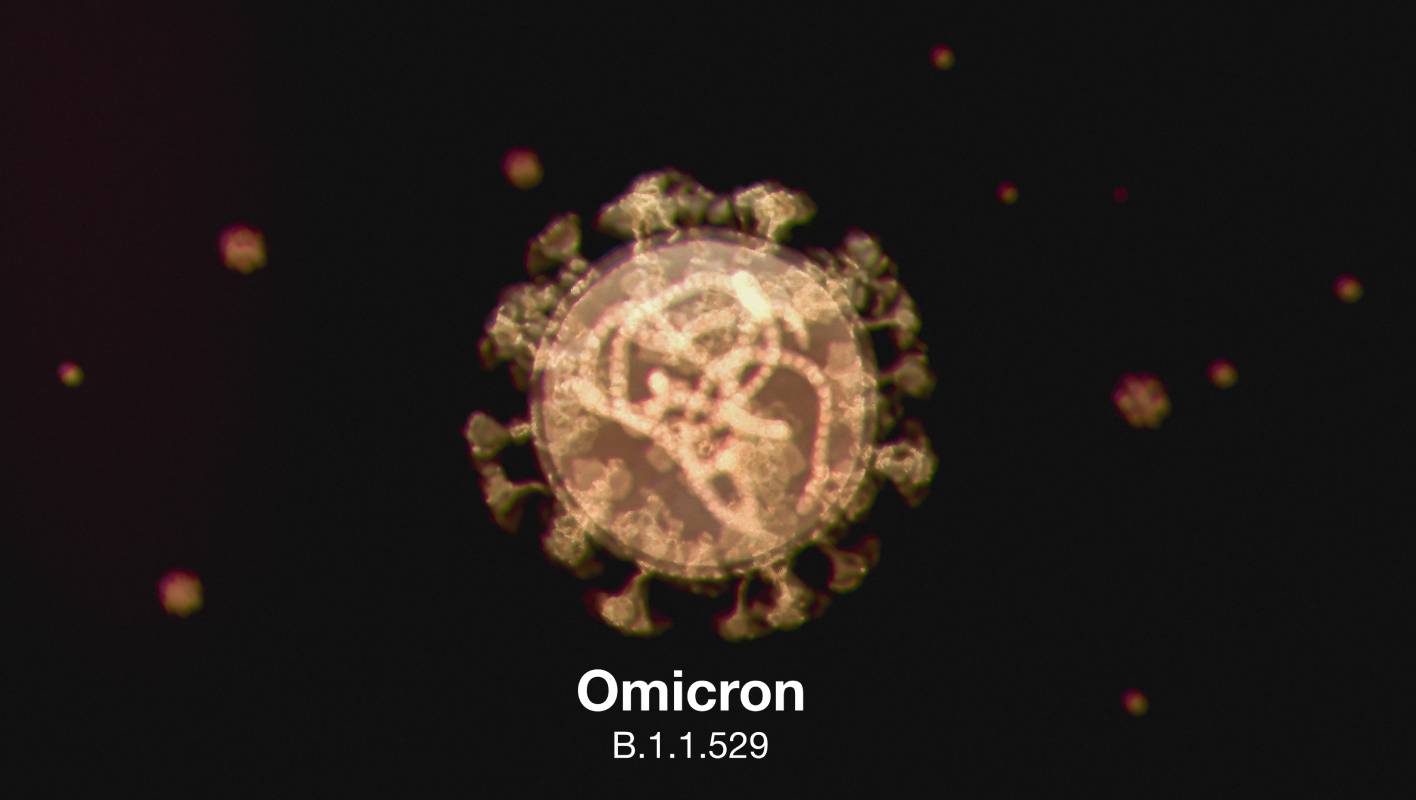
A new SARS-CoV-2 variant, B.1.1.529 a.k.a. Omicron, was recently reported to the World Health Organization (WHO) after being first detected on November 11, 2021 in Botswana and shortly thereafter in South Africa. The variant was identified in the U.S. on December 1, 2021, and in close to 60 countries spanning every continent except Antarctica since 1.
The Omicron variant has been classified as a variant of concern by the WHO, primarily reflecting predictions and preliminary data of increased transmissibility. The estimated doubling time for Omicron cases reaches as little as 2 days, while its estimated reproduction (R) number is above 2, meaning that every person infected with this variant is expected to, on average, infect at least 2 others. This is consistent with current COVID-19 spreading dynamics in South Africa’s Gauteng province, whereby the early doubling time in this fourth COVID-19 wave has exceeded that of all three previous waves 2.
This variant harbors a number of deletions and over 30 mutations, a few of which overlap with those found in the Alpha, Beta, Gamma, and Delta SARS-CoV-2 variants. It is distinguished by two genetically differentiated lineages, BA.1 and BA.2, that may behave quite differently.
For the BA.1 Omicron variant, one of the three genes targeted in a common PCR test is not detected (in a phenomenon known as S-gene target failure), similar to that observed for the Alpha variant 3. This PCR test can thus be used to identify infections by this variant while awaiting confirmation from sequencing. However, BA.2 Omicron, or the “stealth variant”, does not harbor this genetic signature and is thus not distinguishable from other variants by PCR.
Anecdotal reports from South African clinicians highlight that patients infected with Omicron tend to be younger individuals than the previous norm for COVID-19 infections. Many individuals having already survived COVID-19 still fall ill from a new infection, and researchers have estimated that the risk of reinfection with Omicron is five times greater than that with other variants. However, infected patients have so far presented with a clinical phenotype similar to that of past COVID-19 variants 4.
A recent Pfizer-BioNTech study found that, since 80% of the spike protein regions targeted by CD8+ T cells remain unchanged in the Omicron variant, two doses of its mRNA-based BNT152b2 vaccine are able to induce protection against severe Omicron-associated disease. In addition, a third dose of the vaccine can neutralize antibody titers 25 times more strongly than can two doses – emphasizing the continued importance of booster shots 5. In parallel, the mRNA-based Moderna vaccine is being tweaked to better neutralize the Omicron variant. Robust data remains to be collected with regard to the efficacy of other vaccines against this variant.
To date, monoclonal antibodies as well as antiviral treatments (e.g. remdesevir and molnupiravir, which respectively target the virus’ RNA polymerase and other proteins which have remained mostly unchanged) are expected to remain effective in the treatment of an Omicron variant infection.
Researchers are developing predictive models of the Omicron variant’s epidemiological dynamics in the next few months. Meanwhile, in the U.S., the Centers for Disease Control (CDC) are using genomic surveillance tools to monitor all SARS-CoV-2 variants in order to best inform public health policies. It is best, in the meantime, that individuals continue to protect themselves and others by getting vaccinated, including with booster shots, while maintaining safe distancing, keeping windows open when possible to improve ventilation, and wearing masks.
References
- Omicron Variant: What You Need to Know | CDC. Available at: https://www.cdc.gov/coronavirus/2019-ncov/variants/omicron-variant.html.
- Karim, S. S. A. & Karim, Q. A. Omicron SARS-CoV-2 variant: a new chapter in the COVID-19 pandemic. Lancet (London, England) 398, 2126–2128 (2021). doi: 10.1016/S0140-6736(21)02758-6.
- Volz, E. et al. Assessing transmissibility of SARS-CoV-2 lineage B.1.1.7 in England. Nature 593, 266–269 (preprint). doi: 10.1101/2020.12.30.20249034.
- Frequently asked questions for the B.1.1.529 mutated SARS-CoV-2 lineage in South Africa – NICD. Available at: https://www.nicd.ac.za/frequently-asked-questions-for-the-b-1-1-529-mutated-sars-cov-2-lineage-in-south-africa/.
- Pfizer and BioNTech Provide Update on Omicron Variant | Business Wire. Available at: https://www.businesswire.com/news/home/20211208005542/en/.
- Classification of Omicron (B.1.1.529): SARS-CoV-2 Variant of Concern. Available at: https://www.who.int/news/item/26-11-2021-classification-of-omicron-(b.1.1.529)-sars-cov-2-variant-of-concern.

